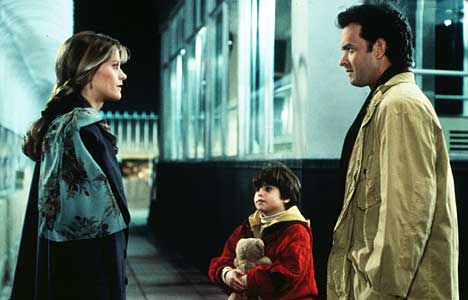Seven Elements of a Story
Last week I attended a Tony Robbins conference called “Date With Destiny”. I used to make fun of Tony Robbins because I first saw his hyper-energetic act in the 1980’s on a tele-commercial, not the most flattering vehicle for his gifts, even by his own admission.
I now know Robbins to be a passionate man with a big heart and an amazing ability to see what drives human behavior.
During the seminar, he told the audience of 2000 people (who were there to transform their lives) that if they weren’t succeeding at something, it was due to their “story” about why they weren’t succeeding.
He said that a man named Jeff Arch once attended Date with Destiny, and a month later Arch found the motivation to write his first screenplay, which became the movie “Sleepless In Seattle”.
Arch, who was nominated for an Academy Award for his screenplay, later shared with Tony Robbins the seven elements of a good story. As a documentary story consultant, I found these seven elements fascinating, if a bit different from the Robert McKee “school of story” that has informed much of my own work.
I share these seven elements here in the hopes of illuminating the common features of a great story and to make your own films more riveting. While your character-driven documentary may not include all of these elements, the more you can incorporate, the more your story will captivate audiences.
- DESIRE. A character with a desire is the single most important element and defining feature of a story. McKee stresses an important precursor of desire: the “inciting incident”, an event or decision in Act One that gives rise to the quest.
- PROBLEM/NEED. After the protagonist’s desire becomes the driving force behind his actions, he encounters a problem that reveals his need. A “need” is a character trait that the protagonist is currently lacking and of which he is often unconscious. He’s focused on what he wants, not what he needs. The “need” element adds a nice layer of complexity that I hadn’t heard of in McKee’s model. Other screenwriters use the “midpoint”, a storytelling device that can help further plot character transformation. Developing a character’s “need” lends itself well to biographical documentaries and personal documentaries.
- OPPONENT. In the pursuit of her goal, the protagonist encounters obstacles or opponents. The opponent may be a person (antagonist), and external condition, or an internal struggle. Opponents or “progressive complications” create the vital tension or conflict that keeps Act Two moving. Without conflict, there is no story.
- PLAN. To deal with the opponent, the protagonist concocts a strategy to get what she wants. I don’t recall McKee specifying a “plan” in his story schematic, but it’s a nice device to focus the protagonist’s desire.
- BATTLE. Every compelling story requires some pinnacle moment of conflict, also known as the Act Three “climax,” that calls forth the protagonist’s greatest effort. No surprise here.
- SELF-REVELATION. The battle births a new belief, value, or character trait that fulfills the protagonist desire and/or need. In what McKee refers to as the “dénouement”, the audience can see what life is like now that the protagonist has developed a new belief or character trait.
Two quick notes: first, as Sheila Curran Bernard points out in her wonderful book “Documentary Storytelling”, non-fiction stories are often an approximation of the classic three-act structure. We do the best we can with the footage we have. You don’t have to get it perfect.
Second, I have heard that what we think of as a “story” — the conflict-filled quest — is actually a patriarchal or masculine notion of development. I’ve often wondered what a “feminine” model of story would look like.
To learn more about how to shape your footage into the classic storytelling elements that will create a compelling film, be sure to check out my popular online seminar, “Editing the Character Driven Documentary” at:
